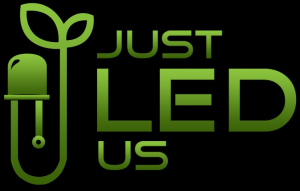The Versatility of LED Grow Lights
There is scientific research being evaluated with respect to warm whites and some people believe that warm whites are better for flowering plants while cool whites are more suitable for green, leafy growth. It is said, when used together, these bulbs are close to the full spectrum light that comes from the sun, but nothing matches the sun, nor is the combination true to the measure of full spectrum LED grow lighting.
Light Emitting Diode grow lights produce a photosynthetic optimum red (640-680 nm) and blue (430-460nm) and they have long life expediencies, and efficiency.
One can extend their understanding of light with the measures of photons outside the ranges of 400–700nm. When we look at 360–740nm (ultraviolet through near infra-red) you begin to see that certain plants do use light outside of PAR, such as far-red light above 700nm which increases photosynthetic efficiency (this is called the Emerson effect) and also for hormone regulation.
UV light (below 400nm) plays an important role in triggering plants to create physiological changes such as pigmentation, vitamins and other substances, and for certain the hydrocarbon secretion of many plants.
The Versatility of LED Grow Lights are incredible as a tool in the amazing endeavor of resin production. There is no consensus on why plants secrete resins but some would argue that they do so to prevent decay, protect itself from bacteria and to limit there loss of water. However, resins consist primarily of secondary metabolites or compounds that apparently play no role in the primary physiology of a plant. While some scientists view resins only as waste products, their protective benefits to the plant are widely documented and even more compelling evidence is emerging with the versatility of LED grow lights.
A simple example of this is when a resin producing plant is introduced to the Emerson effect which is the increase in the rate of photosynthesis after exposure to light of wavelength 670 nm far-red light and 700 nm, red light respectively. Customizations can be made to an LED grow light to create a light stress that triggers plants to secrete more resins, when receiving intermittent intervals of infra-red and UV the plant sometimes produces a resin like compound which acts as defense mechanism to protect the itself. This resin sometimes is collected and used for essential oils and other medicinal compounds just as softer odoriferous oleo-resins (frankincense, elemi, turpentine, copaiba) and gum resins containing essential oils (ammoniacum, asafoetida, gamboge, myrrh, and scammony) are more largely used for therapeutic purposes and incense.





Leave a Reply
Want to join the discussion?Feel free to contribute!